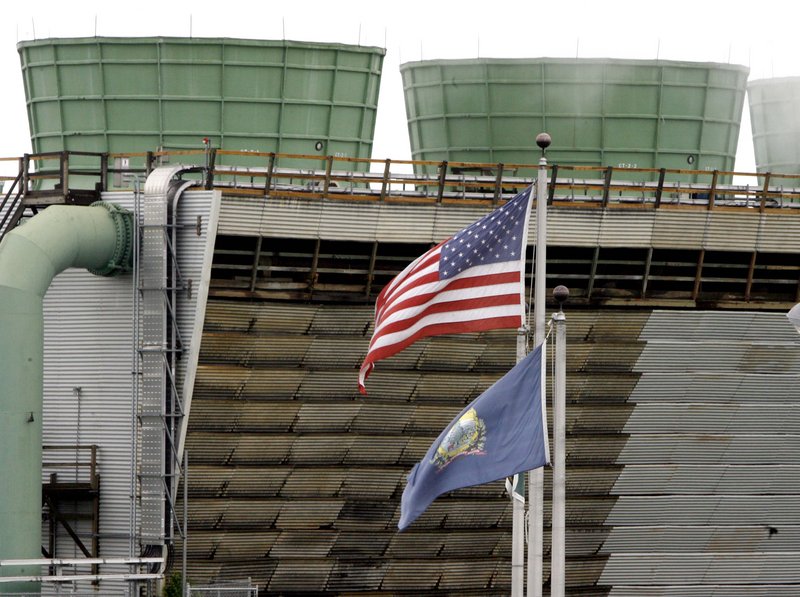WASHINGTON — As Japan copes with one crisis after another at its Fukushima Dai-ichi nuclear complex, a review of federal records indicates that nearly a quarter of America’s nuclear reactors in 13 states share the same design of the ill-fated Japanese reactors.
The plants, called Mark I Boiling Water Reactors, were designed by General Electric. GE, which is donating $5 million to Japan for its relief effort, said Monday it was too early to assess what produced the problems at the complex.
On Monday, the Japanese blasts prompted calls for an immediate review of the 104 nuclear plants now operating in the United States, including many aging facilities, to see if they could withstand a gut-punch by nature that would kill the electricity, cripple the cooling system and threaten a nuclear meltdown.
The Japanese crisis, and the potential scrutiny of America’s reactors, comes as the nuclear industry seemingly had won a new lease on life. After decades as an orphan technology shuttered by the meltdown at Three Mile Island in Pennsylvania, rising concerns about global warming, the need to curb carbon pollution and a quest for more electric production to fuel economic expansion buoyed nuclear fortunes.
GOP lawmakers in the House of Representatives even proposed tripling U.S. nuclear production by building 200 new plants in the next 19 years.
Now, that all seems at risk.
With the Fukushima complex still making headlines, White House officials sought to assure the public that there’s nothing to worry about.
“The U.S. power plants are designed to very high standards for earthquake effects,” said Gregory Jaczko, chairman of the Nuclear Regulatory Commission. “All our plants are designed to withstand significant natural phenomena, like earthquakes, tornadoes, and tsunamis.”
Five of the six reactors at the Japanese plant, which sustained a second explosion Monday, use the same General Electric reactor that are at 23 nuclear plants in North Carolina, Georgia, Illinois, Pennsylvania, New York, New Jersey, Alabama, Nebraska, Iowa, Michigan, Minnesota, Massachusetts and Vermont, according to a database maintained by the NRC. All but two of them began operating in the 1970s.
“These need to be examined,” said Michael Mariotte, executive director of the Nuclear Information and Resource Service, an anti-nuclear organization. “When the reactor designs are the same, and the reactor’s ages are the same, comparisons seem more than appropriate.”
On Capitol Hill, some are calling for a halt to further nuclear development in the United States.
Rep. Ed. Markey of Massachusetts, the top-ranked Democrat on the House Natural Resources Committee, called for a moratorium on new reactors in seismically active areas until a new safety review is completed. Markey joined three other Democrats in asking the House GOP to conduct a hearing on the safety of U.S. nuclear plants.
Independent Sen. Joe Liebermann of Connecticut, chairman of the Senate Homeland Security Committee, said it was time to “quickly put the brakes on” the U.S. industry.
But in a speech on the Senate floor, Tennessee Republican Sen. Lamar Alexander came to the nuclear industry’s defense: “Without nuclear power, it is hard to imagine how the United States could produce enough cheap, reliable clean electric to keep our economy moving and to keep our jobs from going overseas.”
Any reactor design today faced with the combination of an earthquake and a tsunami would likely be in a similar situation as the plant in Japan, said David Lochbaum, a nuclear engineer who directs the Union of Concerned Scientists’ nuclear safety program. Reactors are built to withstand an earthquake or a tsunami, but not both on the same day, he said: “We’ll have to go back and revisit that and see if we can do better.”
On a different front, Lochbaum said U.S. reactors generally have less backup battery power than Japan’s. Most have four hours of battery power, although some have eight hours: “We’re light compared to what Japan had and Japan came up short, which would suggest we’re even more vulnerable than they are.”
Richard Caperton, an energy policy analyst with the Center for American Progress, said it’s too early to draw lessons from Japan because it’s not fully known what happened.
“The Japanese situation reminds us there’s always a danger with a nuclear reactor and when we build new nuclear reactors we need to realize bad things can happen,” he said.
Send questions/comments to the editors.



Success. Please wait for the page to reload. If the page does not reload within 5 seconds, please refresh the page.
Enter your email and password to access comments.
Hi, to comment on stories you must . This profile is in addition to your subscription and website login.
Already have a commenting profile? .
Invalid username/password.
Please check your email to confirm and complete your registration.
Only subscribers are eligible to post comments. Please subscribe or login first for digital access. Here’s why.
Use the form below to reset your password. When you've submitted your account email, we will send an email with a reset code.